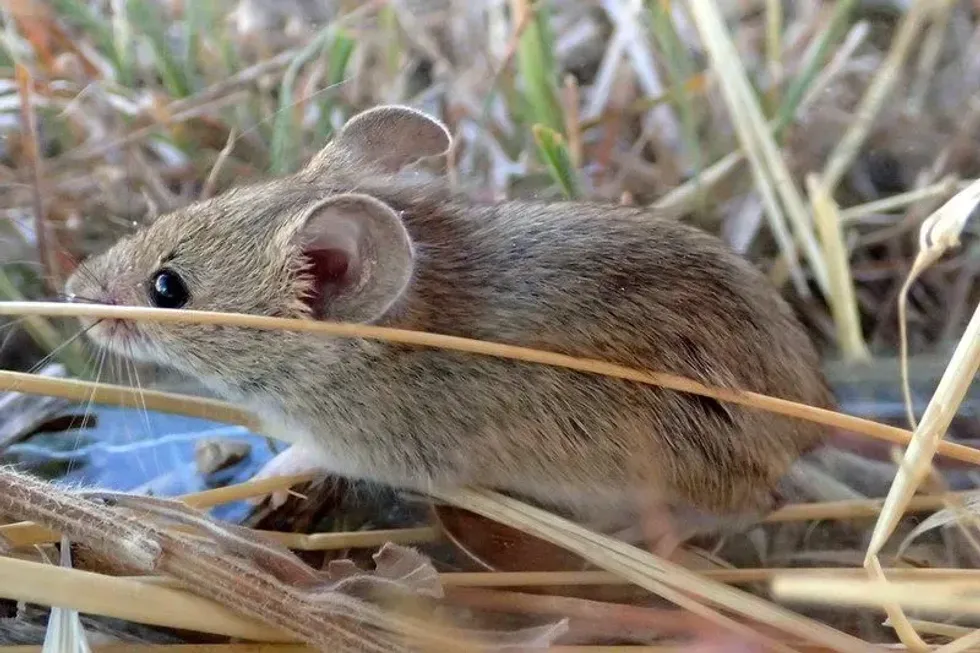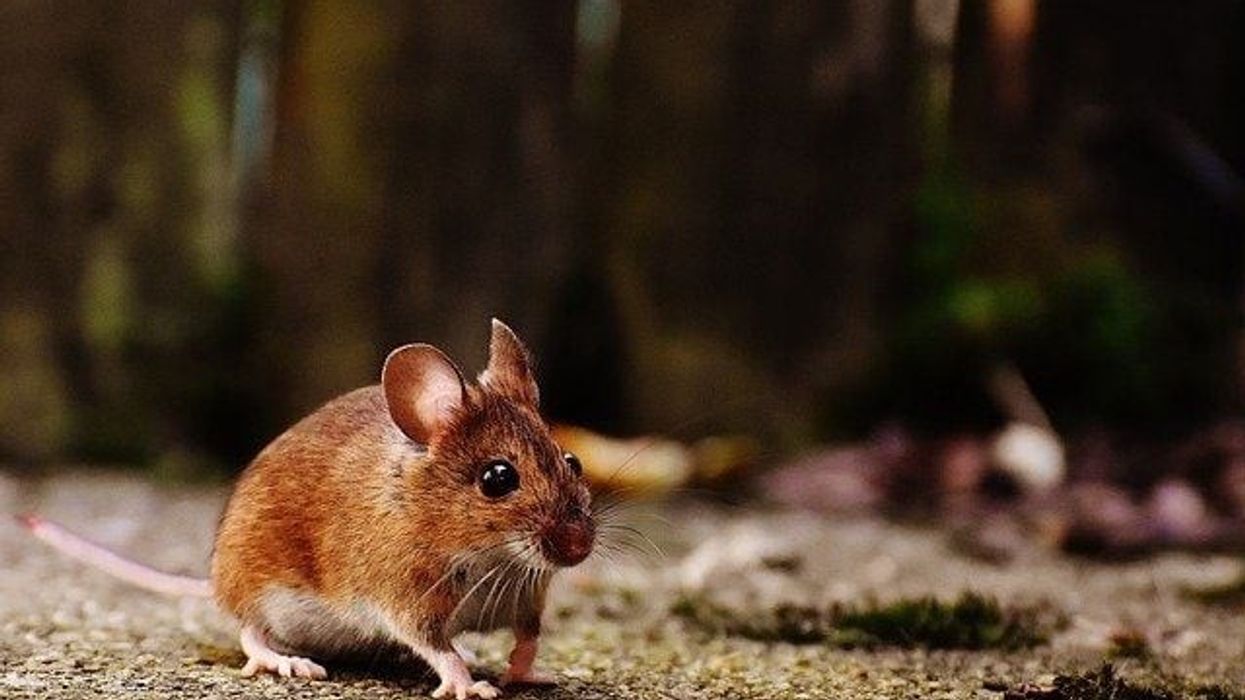The Algerian mouse (Mus spretus), also called the western Mediterranean mouse, is a wild mouse species of the family Muridae. These Algerian mice are closely related to house mice (Mus musculus) and are native to the western Mediterranean, for which they are named.
The Algerian mouse population is one of the three extant wild species.
The relationship between these two species, Algerian and house mouse (Mus musculus) is not known. However, it might represent early Algerian mouse evolution differences.
The oldest fossils of the Algerian mice found in Morocco dates back 40,000 years. Additionally, evidence-based on genetic diversity, shows that these mice first arose in Africa and then migrated north to Europe, probably due to agricultural expansion of land to this continent in the Neolithic age.
There are four described species in the genus Mus, and all are native to Europe.
The species in Mus or mice are typically muroid rodent species. While studying mice being resistant to warfarin, the genetic study in science revealed that house mice contained a vital amount of DNA of the Algerian mice and a gene that is resistant to warfarin.
If these Algerian mouse facts were interesting, then do read some nutria and hamster facts on Kidadl.
Algerian Mouse Interesting Facts
What type of animal is an Algerian mouse?
The Algerian mouse (Mus spretus) is a wild mouse of the order Rodentia and phylum Chordata. The Algerian mouse is nocturnal species.
This mouse is an opportunistic omnivore and primarily feeds on fruits, insects, and grass seed. It is stated that this mouse only needs two-third of the volume of drinking water needed by the house mouse.
This species of mouse defend their territory from other mice and is less aggressive than house moue. It is believed that this mouse 'caught evolution in the act,' as stated by Biologist Michael Kohn.
What class of animal does an Algerian mouse belong to?
The Algerian mouse (Mus spretus) belongs to the class of mammals of animals.
How many Algerian mice are there in the world?
The number of Algerian mouse (Mus spretus) populations around the world is not known.
Where does an Algerian mouse live?
The Algerian mouse habitat extends to the Western Mediterranian coast of Africa and South-western Europe. This mouse's habitats in European parts include north parts of Spain, mainland Portugal, east of the Pyrenees, and south into France.
In France, the habitats extend from the south-eastern regions in Toulouse and the northern part in Rhone valley into Vallance. They can also be found across the Balearic Islands.
Their habitats extend to Maghreb areas of Algeria, Morocco, Tunisia, and western Libya, northern Sahara desert in northern Africa. Also, small populations of these mice are found in eastern Libya.
What is an Algerian mouse's habitat?
These rodents are spread in habitats with open terrain sites but avoid deserts. They are found in arable land, temperate grasslands, and rural gardens.
They can usually be spotted in open scrub or grassland with tall grasses and shrubs to help hide from natural predators. They are rarely found in abandoned buildings as they avoid human beings. The adult Algerian mouse male occupies a territory of about 3,700 sq ft (340 sp m) and this overlaps with populations of neighboring females.
Who do Algerian mice live with?
Mus spretus Lataste (also called western Mediterranean mouse) prefers to live in a group as they breed regularly.
How long does an Algerian mouse live?
Some reports have shown that the Mus spretus Lataste live up to 15 months.
How do they reproduce?
Mus spretus species reached sexual maturity by eight to nine weeks. They also breed for nine months in a year and are only inactive from November to January.
They are particularly active in two breeding seasons. Adults that survive from the previous year produce next-generation mice in April and May.
Later, the parent and the offspring both breed in the second peak phase from August to September. The gestation period of an Algerian mouse female lasts for 19 - 20 days.
Females can lay around 2 - 10 hairless and blind pups and five pups are average.
Around two to four days the young ones develop hair, at three to five days their ears open, and at 12 - 14 days they open their eyes. As soon as the young open their eyes, they feed on solid food.
These species get fully weaned around three to four weeks and they leave the nest in the next few days. At around eight to nine weeks, they reach their adult size.
Algerian and house mice are closely related enough that a male house mouse can mate with a female Algerian mouse to produce feasible offspring. This, however, was observed in captivity and might not occur due to changes in the habitat range of these two species.
What is their conservation status?
The conservation status of Mus spretus is Least Concern, and are not endangered. However, they do face the threat of predation and humans.
A research analysis done around the year 2011 also shows that exposure to crude oil on-field causes severe damage to these mice. This analysis data also stated that bristly hairs and lethargy were seen in these animals and on high doses these animals died.
Algerian Mouse Fun Facts
What do Algerian mice look like?
Mus spretus (also called western Mediterranean mouse) species are similar to the appearance of a house mouse. However, Algerian species can be identified by their shorter tails that do not extend from their hind legs. The upper fur is brownish-gray and the underpart is buff or white. There is no difference in appearance between females and males.
How cute are they?
Mus spretus small rodents. Some consider them cute and some are creeped out by them.
How do they communicate?
Mus spretus communicates through vocalization and visualization.
How big is an Algerian mouse?
The head-body length of Mus spretus is 3.1-3.7 in (7.9-9.3 cm). Tail length is 2.3-2.8 in (5.9-7.3 cm). These species are almost twice the length of a Roborovski dwarf hamster.
How fast can an Algerian mouse move?
The exact running speed of a Mus spretus is not known.
How much does an Algerian mouse weigh?
These species weigh around 0.03-0.04 lb (15-19 g). They are as heavy as a small wood mouse.
What are the male and female names of the species?
There is no specific name given to males and females of this mouse species.
What would you call a baby Algerian mouse?
There is a specific name given to the baby Algerian mouse. The young ones are referred to as pups.
What do they eat?
The Algerian mouse diet is omnivorous. They feed on insects, grass seeds, and fruits.
Are they dangerous?
These species are not dangerous to humans. They are in fact scared of humans and stays away.
Would they make a good pet?
These European mice do not make a good pet. These animals are wild rodents and thrive in high woody vegetation.
Did you know...
Predators of these mice are snakes, owls, and mammalian carnivores.
What's unique about Algerian mice?
Some features of Algerian mice are evolutionary pressure and genetic exchange. Research data shows that these species are resistant strongest poisons.
Also, the hybridization of two species, Algerian with german or Spanish mice caused the genetic exchange providing the later species with poison resistance features. Kohn stated that the Algerian mouse went through spontaneous mutations during replications of DNA. This mutation was acquired by them to counter the vitamin k deficiency.
How closely related is the Algerian mouse to the house mouse?
A genetic study revealed that house mice contained a vital amount of DNA of the Algerian mice and a gene that is resistant to warfarin. These two species are similar in appearance. However, Algerian species have shorter tails that do not extend from their hind legs.
Here at Kidadl, we have carefully created lots of interesting family-friendly animal facts for everyone to discover! For more relatable content, check out these dormouse facts and gerbil facts pages.
You can even occupy yourself at home by coloring on one of our free printable mouse coloring pages.










